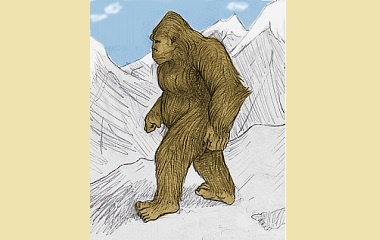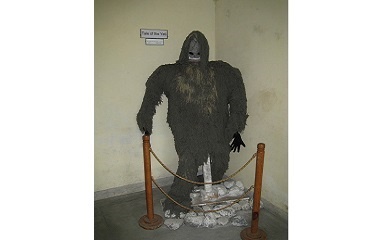What is a Yeti?
A Yeti is a large, ape-like creature that dwells deep in the snowy wasteland of the Himalayan mountains. Local people and mountaineers have been telling stories about this creature for centuries, but most people remain skeptical about the creature’s existence.
Characteristics
Physical Description
Despite the fact that its local name, metoh-kangmi, means “man bear,” the Yeti is described as a giant, ape-like creature. It walks on two legs and has a primate face, with small ears, a flat nose, and long fangs. Shaggy fur, ranging from reddish-brown to white in color, covers its body. Its enormous footprints resemble bare, human feet.
Personality
Few people have encountered Yetis in the while. Even fewer people have had encounters that lasted more than a few seconds. Given their elusive nature, it’s tough to pin down the Yeti’s personality—other than to say they don’t like to be seen by us.
Although they certainly aren’t friendly towards humans, it’s possible that these “abominable” beasts are actually social creatures. Local people tell stories of the metoh-kangmi living in tribes, and many witnesses have reported seeing two or more creatures together.
At the same time, local legends claim that “no one who sees the wild-man will live.” They are highly territorial and can turn violent in a second if they think you pose a threat to their way of life.
Cultural Representation
Local Tradition
Himalayan natives in Nepal, Bhutan, Tibet, and China all share a legend about a “wild man” or “man bear” who lives in the mountain wilderness. Some groups, like the Lepcha and Bon people, worshipped the mysterious being and are even reported to have used its blood in special rituals. Other people, like the Sherpas, tell stories about the monsters raiding their villages or attacking children who wander into the wild.
Western Popularity
In 1921, a British expedition into the Himalayas, led by Charles Howard-Bury, brought the Yeti to the western world’s attention for the first time. Howard-Bury told a reporter that he had seen monstrous footprints in the snow; the reporter, in turn, nicknamed the mysterious creature who had left these footprints “the Abominable Snowman.”
In 1950, the first Yeti photos were taken by Eric Shipton, during an attempt to climb Mt. Everest. Although the photographs only captured the creature’s footprints, and not the creature himself, they were enough to make the Yeti famous overnight.
During the 1950s, almost every Western explorer who ventured into the Himalayas brought back tales of the Yeti. Some of them brought evidence too: photographs of shaggy, bipedal creatures in the distance, plaster molds of giant footprints, and even samples of reddish hair. By 1957, expeditions were being funded specifically to search for the Yeti. These produced more photos, hair, and even feces.
In the 1960s, Yeti evidence began getting grislier. Explorers smuggled whole body parts out of the Himalayas, including a finger, a hand, and a scalp that were supposed to belong to the elusive monster.
Explanation
Native folklore can be explained as cautionary tales, meant to keep children from wandering into the wild or approaching wild animals, and photographs can be dismissed or hoaxes or cases of mistaken identity. But what about all the bits of fur and bone that explorers have collected over the years?
Faced with concrete evidence that the Yeti might exist, scientists have begun coming forward to examine hair, feces, bone, and skin samples. Most of the samples have been attributed to known animals like brown bears, yaks, langur monkeys, Tibetan blue bears, or even humans. But some of them stand up to genetic testing. Scientists have either found no match for the samples (indicating that they might have come from an unknown species) or have matched the samples to an ancestor of the polar bear, which was previously thought to be extinct. However, damage to the samples could also explain these seemingly positive results.
Until a full, Yeti carcass (or, better yet, a live Yeti!) is produced for scientists to study, this “abominable monster” will probably remain a secret of the Himalayas forever.











